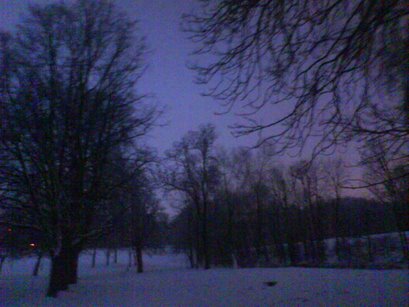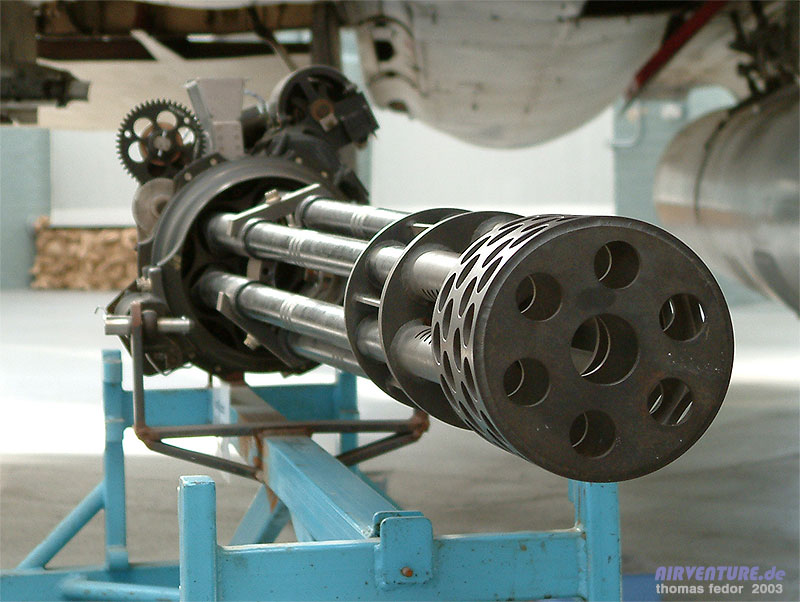due to a benti made from a close gursikh brother of mine, baba will be having a time out from this blog business.
Therefore there will be no more comments or posts.
Baba apologies for any inconveniences caused.
If you need to speak to baba please contact baba on the gupt email address provided on the first article on this blog.
For now, good bye
:-)
bibi kulwinder kaur jammu
bibi kulwinder kaur jammu
bibi kulwinder kaur jammu
bibi kulwinder kaur jammu
About this blog
This blog happens to be the BEST blog in the entire universe
handsworth park

beautiful park, however one setback is that whilst japping naam in this park, you may get mugged by kaleh
Saturday, 3 March 2007
raagmala is not gurbanee
- An article below clearly proving raagmala not to be gurbani
"Author: ...
Date: 01-21-06 09:53
Ragmala NirNiya
By Prof. Piara Singh Padam
Sikh Missionary College, Amritsar
Just as in Punjabi literature, poets have written love stories of “Sohni-Maheevaal” and “Mirzaa-Sahibaa”, in old Hindustani literature, “Madhavaanal & Kaamkandla” is a story many poets wrote. Prof. M R Maujamdar (Baroda College) is the main researcher in regards to the old literature related to Kamkandla. He has written me a letter in which he says that Pandit Anandhar had written “Madhvaanal Akhian” in a mix of Sanskirt language in the 11th or 14th Century. Prakrit can also be found in this work. The story has been presented as a minor play.
After this, Gurjarti poet Ganpat, who was a resident of Baroch Gujarat, wrote a long poem Madhvaanal Kaamkandla Prabodh in 1584 Bikrami. There are eight chapters and 2565 verses in it. From a literary view, this is important to read for a researcher.
After this, in 1616 Bikrami, Kaushllaabh wrote Maadhvaanal Kaamkandla Chaupaiee. Both these books are written in Rajasthani language and have been influenced by Prakrit.
Based on Sanskrit and Praakrit books, poet Aalam, a contemporary orf Akbar, in 1640 Bk. wrote the book Madhvaanal Katha in Hindi. This has 353 verses and most of it is Chaupaiee style. This story was first very famous in Gujarat and so, after Akbar had conquered Gujarat, he had it translated into Hindi. Aalam has hinted at this in the start of his work.
Prof Maujamdar in his book writes:
“This story appears to have been popular mostly in Western India, only very a late period it came to be adopted in Marathi. The version of the story in Hindi by a Muslim poet, “Alam” styled “Madhavnal Katha” was composed in Hijri samt 991 (1640Bi,. 1584 AD) only a decade after Akbar’s conquest of Gujrat at the expressed desire of Raja Todar Mal for the pleasure of emperor Akbar.”
This belief has been supported by Missr. Bandu Binod, Ram Chand Shukal, Ganga Prashaad and Dr. Hira Lal. This belief by the academics is not based on some hearsay, but based on the book’s internal evidence.
Jgpq rwj kot jug kIjY[ Swh jlwl Cq®piz jIjY idlIpiq Akbr sulqwnw[ spq dIp mih jw kI Awnw[ Drm rwj sB dys clwvw[ ihMdU qurk pMQ sB lwvw[ AwgY nYb mhwmq mMq®I[ in®p todr ml Cq®I[ … dys dys ky Bupiq AwvihM[ duAwry Bir vwr nihM pwvihM[ sMn nO sO ieikAwvn AwhI[ kro kQw ab bolo qwhI[ kCu ApnI kC p®wik®q coro~[ XQw Skq kr Acr joro[
After this, the story in the book (briefly) follows that a singer by the name of Maadhvaanl is a resident of Pushpaavti. All the women of the town are attracted to him. The King exiles Maadhv and from there he goes to King Kamsain’s town of Kaamvati. Here a dancer by the name of Kaamkandla is dancing in the King’s court. Here, poet Alam takes the opportunity to show his knowledge of Raags, and has Kaam Kandla sings the family of Raags according to the Hanumant school. It is important to be a good storyteller so the poet keeps both things in mind. First he paints a picture of many instruments being played and then he begins the singing of the raags. The poet writes:
BIn auPMg bMsrI bwjY[ FwfI jMq® Amim®qI swjY[ surmMfl vwjY Gn qMqI[ rud® bIn swrMg bhu BmqI[ aJlqwl kT qwl bjqvY[ agnI qwl q®Mg aUpjwvY[ jlq qrMg AMim®q kuMflI[ kuMBr bwjY iml Duin BlI[
dohrw- bwjY srb sMgIq gq qMq AqMq Gn qwl[ bhur AlwpY rwg Kt pMc pMc sMg bwl]33]
cOpeI-ip®Qm rwg Byrau vY kreI[ pWchu kwmin muKhu aucreI]....
After this, the entire composition is that which some fan of raags has titled “Ragmala” and entered in Guru Granth Sahib. It should be remembered that the Aadi BiR was put together by Guru Arjan in 1661 Bk. And Ragmala was written in 1640 Bk. For this reason, it is completely baseless for supporters of Ragmala to say that Alam stole this composition from Guru Granth Sahib and put it in his book.
Supporters of Ragmala say that a contemporary of Akbar, Jodh, wrote a Sanskrit book, “Madhvaanal Kaamkandla” and no Alam was around at that time. This Alam, they claim, is from the time of Dashmesh jee. He has translated that Sanskrit book into Hindi and stolen Ragmala out of Guru Granth Sahib and then put it in his own book, because Alam, being a poet of Dashmesh ji, knew Sikh literature very well. They claim that the date in the book of 991 Hijri was put there accidentally and is a translation of the date in the original. They say that the real date of the composition is 1774 Bk. To support this claim, they cite the Dohara:
byd dIp muin ieMd Dr sivqw juvq gqwn[ hMs vwr iQq AstmI swkw ibk®m jwn[
This is the total evidence of the supporters of Ragmala. We want to reflect on this evidence here. Firstly, the above Dohara that gives the date as 1774 Bk. is not found in any old hand written copy. Two hand-written copies have been found of this composition. One is at the Nagri Prcharni Sabha, Benaras and the other is at Bikaner’s Fort Library. This Dohara is not in either copy.
One copy in Gurmukhi script is found in the Guru Ram Das Library in Amritsar. This Dohara is not in that one either. S. Shamsher Singh Ashok, in the copies he found at Punjab University Lahore also did not find the Dohara there. Where the Ragmala supporters are citing this Dohara from is beyond me. Even if this Dohara is in some book’s end, it is the date that the copy was made, not the date of the composition itself, because the date is given clearly at the start as 1640 Bk.
However, the real date of this composition is disputed by the supporters of Ragmala and they it is the creation date of Jodh Kavi’s Sanskrit work, which was accidentally copied by Alam. I want to ask these people, is there even any Jodh Kavi who wrote a Sanskrit work “Madhvaanal Katha” during the time of Akbar? The truth is that in the list of Sanskrit writers at the time of Akbar, there is no mention of any Jodh Kavi. For proof, the books “History of Sanskrit Literature”, Sanskrit Kavita Komdi” and “Sanskrit Kavio(n) Kaa Ithihaas” can be checked. Prof. Maujamdar in a letter to me has aid that “No mention is found of a “Madhavnaal Katha” by any Jodh Kavi in old records, nor have I ever heard of a Jodh Kavi.”
Supporters of Ragmala should tell us where we can find this Sanskrit “Madhav Katha” in either published or unpublished form.
The truth is before academics: there was no Jodh Kavi and no literature by him. Though, if someone now creates some fabricated saloks, they could become a “truth”.
Even if we accept for the sake of argument Shiv Sinh Saroj’s word, which is wrong, that Alam was born in 1712 Bk. this story by him was written in 1774 Bk. This would mean that at the age of 62 during his old age, he liked to write the story of a prostitute. And this would be the same Alam who had spent much time in the Guru’s Darbar. This does not seem possible on a psychological level. Such love stories are generally only written in the time of youth. Secondly, if Alam had written Madhav Katha in Hindi during this time, he certainly would have mentioned Dashmesh ji or Bahadar Shah. But the Kavi only sings the praises of Akbar or Todar Mal.
It can be accepted that during the time of Dashmesh ji, there was another Kavi Alam. However it is certain that the Hindi writer of Maadhvaanal Katha was contemporary of Akbar who wrote Ragmala in his book. This composition was then stolen and put at the end of Sree Guru Granth Sahib by someone and labeled “Ragmala”.
It is possible that Bhai Banno added this composition just like he had added RatanMala, because in the Bhai Banno BiR, Ragmala is found at the end of all other extraneous compositions that were added. If Guru Arjan had added Ragmala, then it was important that it would have been after Mundavani in the Bhai Banno biR (before all the extra compositions). Because, Bhai Banno only added his extraneous material after copying all the bani Bhai Gurdas had written. In Bhai Banno’s BiR, Ragmala comes at the end of all the Banis. This proves that perhaps Bhai Banno heard this from someone and then added it. This remains an issue for research that who added Ragmala. It is possible that even in Bhai Banno’s biR, someone else added Ragmala. But this is clear tha the biR Bhai Banno copied did not have Ragmala in it.
Even now there are 8-10 old hand written BiRs that do not have Ragmala and others that have Ragmala added even after the “Siahee Kee Bidh”. Supporters of Ragmala are unable to answer why these biRs have been left without Ragmala. Up to here was the historical debate on Ragmala.
Now I want to look at the internal arrangement of Ragmala to see where it is from. Firstly, the pronouns in Ragmala show that the nouns have appeared somewhere before it in the composition, which becomes clear when Alam’s Madhvaanal Katha is read. But if we consider the Ragmala in Sree Guru granth Sahib to be an independent composition, the pronouns do not make any sense.
Bhai Veer Singh, in his knowledge, has said that the Ragmala refers to the “rwg rqn prvwr prIAw sbd gwvx AweIAw” in Guru Amardas Sahib’s Anand Sahib. From a grammatical standpoint, I do not understand why nouns used by Guru Amar Das would be referred to in the pronoun form by Guru Arjan Dev jee. If we accept Bhai Sahib’s view based on him being an elder, that “vai” and “oun” ec. Are pronouns for the “Raag Pareeaa(n)’s” nouns, the question arises that what would the meaning of “p®Qm rwg Byrau vY krhI” be? That the raags first sang Bhairo(n)? Meaning the raags came and sang raags? Only Bhai Sahib knows the answer to this problem.
The verbs that follow should also be kept in mind:
1) p®Qm rwg Byrau vY krhI]
2) pMcm hrK idsqK sunwvih]
3) duqIAw mwl kausk Awlwpih]
4) auTih qwn klOl gwien qwr imilavhI]
5) sb imil isrI rwg vY gwvih]
6) iqh pwCY isMDvI b]AlwpI]
7) aUcy suir sUhau puinkInI]
Kst rwg auin gwey sMig rwgnI qIs]
From these verbs it is clear that some singer is singing these raags. Who is doing this all? If Guru Arjan Dev has given this only as a list of raags, then who is being referred to as singing loud and mixing melodies? A smart scholar like Pr. Jodh Singh writes “Guru Granth Sahib has been written in raags and so it was necessary to tell which “mat” singing these raags is appropriate in. Dr. Charan Singh has reached the conclusion that the mat in Guru Sangeet is different from other mats and they have created Ragmala to showcase this.” (August 25, Khalsa Advocate).
1) From this Ragmala, can it be discovered which mat (school) it is right to sing raags in? Can someone intelligent tell which notes for raags and timings/venues are discussed?
2) Secondly, if this has been written to show how to correctly sing the raags, why did Guru Sahib start the pothi at Sree Raag?
3) Why is Bhairon left for 24th spot?
4) Why did not all the raags used find their way into Ragmala?
5) Why were those raags not used also listed?
6) It should be remembered that 9 raags used in BaNee are not found in Ragmala. The truth is that Guru Granth Sahib contains spiritual truth not information on raags. This is just a fictional composition.
Beyond this, the mistakes in Ragmala also show that the person who added it did so after hearing it and did so very quickly. Bngaal is written as Bangaalm, Kalaekhi is Kachaeli, kalingan is kalanka, sindhri is sandoor, barbal is prabal, maalav is saloo, kukani is gungani, kaukhat is khoukhat and jaalandhar is jablidhar. There are other mistakes as well such as “raag raag sang panch barangan” is written “raag ek sang panch barangan” ; “malkaus raag sang laiee” is “maal rag kousak sang laiee”; “kaval kusam panchan kay nama” is “chanpak kay nama”.
These mistakes show that this is not written by Guru jee, but written hurriedly and after being heard only.
Ragmala has a line, “Asht putar bhairav kay gaavehn gain patra” Patr here means prostitute ie. Kamkandla and her friends. Pr. Jodh Singh has written after considerable stretching of meanings that patra does not mean prostitute. But using examples from Maadhv Kathavaa(n)” we can show that it has been used for KamKandla ie. “Nirt karehn nvli gtai kaam kandla paatr” (ch. 5, verse 35)
At any rate, it becomes clear that Ragmala is being sung by a prostitute and Alam is the writer. Those who say this is a composition of Guru Arjan, why can they not explain why it does not have M: 5 in the heading? Why is Nanak not in it? Why is the language different from Guru Arjan Dev jee’s simple and clear language? Where Alam writes “Asht putar mai kahay savari” why is this writing style not found in Guru Arjan Dev jee’s bani anywhere?
Then, the numbering system of Ragmala’s verses also expose it. Instead of 1, 2, 3…the ignorant writer has written “1” 12 times. The person who added it did not put the correct numbers according to the original work, nor are they independently correct. Has Guru jee used such a method anywhere else when numbering verses? The truth is that such a baseless thing that it is weak on all sides. To call such a composition Gurbani is not only a disrespect to Gurbani, it is also a blow to the Sikh faith. Guru jee has clearly said :
bwxI gurU gurUu hY bwxI ivic bwxI AMim®q swry] (982)
Banee is that which contains the truth and naam amrit. This GurbaNee has been concluded at Mundavani. After adding this final seal, there is no question of adding anything after it. Bhai Veer Singh, defying all traditional meanings, defines Mundavni to be a “riddle” to make Ragmala baNee.
Bhai Veer Singh says that Mudavanee found in Sorath Kee Vaar is replied to in the Mundavanee. The truth is that there is no Mundavanee heading there no the word “Mundavanee”. It is there without a tipee as “Mudavanee”. Guru Sahib himself answers this riddle “Eh MudavaNee Satguru paiee, Gursikha(n) ladhee bhaal”. Then why did Guru Arjan Dev jee need to open It further? If it was an answer to the riddle, it should have appeared in Sorath Kee Vaar.
Anyways, the Mundavnee found at the end of Sree Guru Granth Sahib is based on “Mund” or to close. It is the closing seal. Guru Granth Kosh, BaNee Biora, Mahan Kosh and the Faridkoti Teekaa all define it as “seal”. However, in the newer editions of BaNee Biora and Guru Granth Kosh, Mudavanee and Mundavanee have been grouped together and defined as “riddle”. This is not appropriate for a writer but to make Ragmala baaNee, it has not been considered wrong.
Here we also give a list of names of those who did not believe Ragmala to be GurbaNee, which shows what learned people believe: Mahakavi Bhai Santokh Singh; Pandit Tara Singh Nirotam; Gyani Dit Singh and Prof. Gurmukh Singh of the Singh Sabha Movement; well known historian Gyani Gyan Singh; Sadhu Gobind Singh Nirmala; Prof. Hazara Singh; J. C. Cunningham - the author of History of Sikhs; well-known historian Macauliff; Bhai Sahib Bhai Kahan Singh Nabha, the author of Mahan Kosh; Master Mota Singh; Master Mehtab Singh, Master Tara Singh, Gyani Sher Singh, Babu Teja Singh, Giani Nahar Singh, Principal Dharmanant Singh, Prof. Teja Singh, Principal Ganga Singh, Dr. Ganda Singh, Prof. Sahib Singh, S. Shamsher Singh Ashok Research Scholar of S.G.P.C., Pandit Kartar Singh Daakhaa, Principal Bawa Harkishan Singh, Principal Narinjan Singh, Prof. Gurbachan Singh Talib; Principal Gurmukhnihal Singh and many others.
G. Gian Singh has said that at the Deepmala of 1906BK, a Panthic decision was reached that Ragmala is not Gurbanee. Giani jee writes:
SMmq aunI sO Cy mwh[ ibk®m pwvn kqk Awih[ sMq idAwl isMG ky fyry[ pMQ iek~Tw Bxo vDyry[ ies pr Bxo vicwr Apwrw[ dipmwl pr inrnyvwrw[ Bxo inbyr vicwria Xw hY[ rwgmwlw gurbwxI nw hY[
After, this when writing the “Rehit Maryada” draft, the Panthic scholars decided to have the bhog at Mundavanee, but despite this, Bhai Veer Singh wrote at the end of Guru Granth Kosh that Gurmat Sangeet is different from other Sangeet traditions and Guru Arjan Dev jee wrote Ragmala to show this. Thus, Ragmala is Bani. Khalsa Samchar newspaper repeated these baseless statements many times and scholars refuted these each time. But because of Bhai Veer Singh being an elder or some other reason, no scholar wrote against him."
I have removed all comments on this article due to a benti from my brother.
This article however will remain on this blog.
Any empty threats from internet warriors will not be taken into consideration.
Subscribe to:
Comments (Atom)




